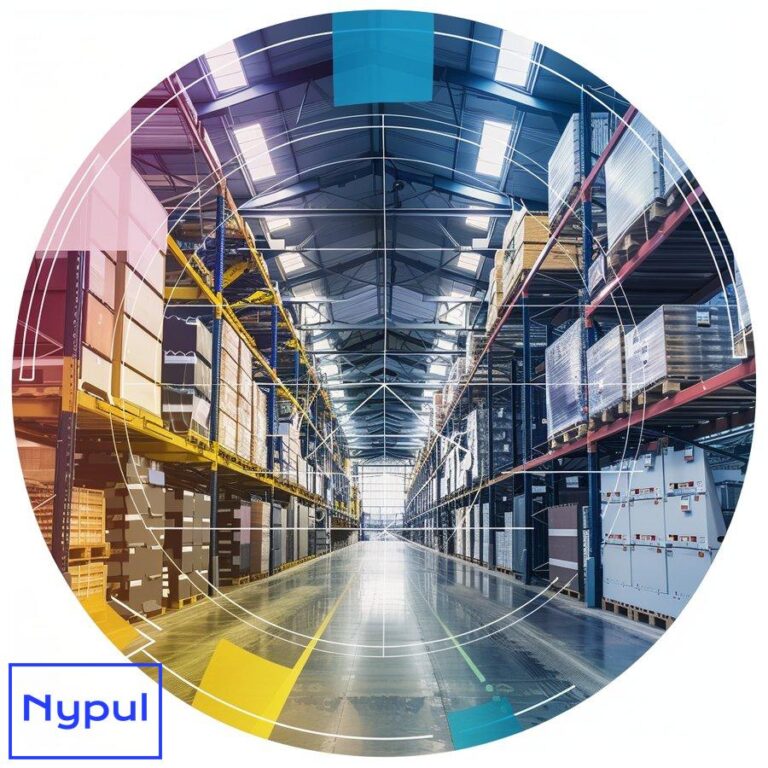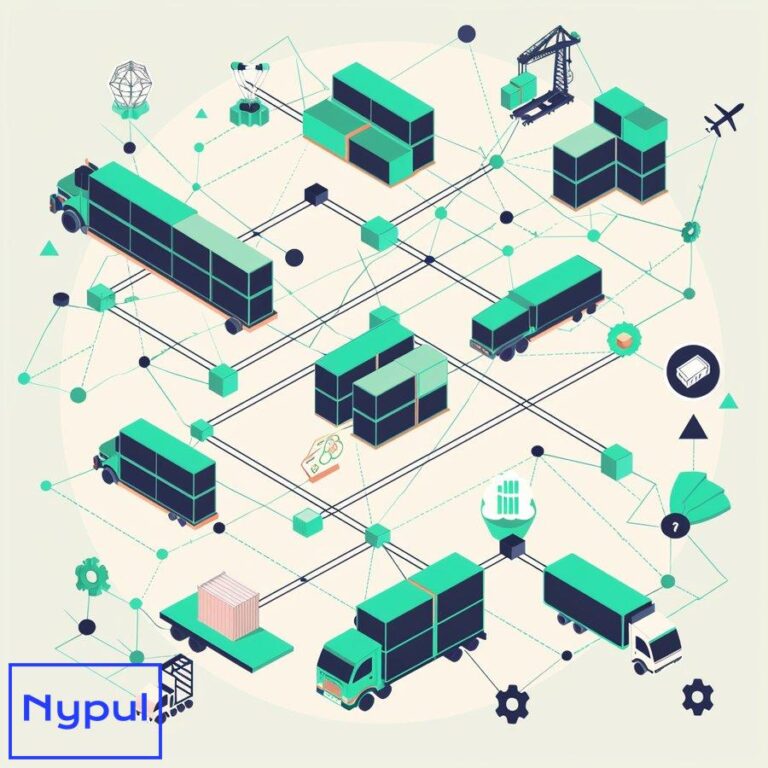What Is the Role of a Drayage Operations Specialist
What does a drayage operations specialist do?
A drayage operations specialist plays a pivotal role in the logistics industry, focusing on the short-distance transportation of goods, typically involving the movement of containers from ports to warehouses or distribution centers. Their responsibilities encompass a wide range of tasks that ensure the efficient flow of goods within the supply chain.
Core Responsibilities
-
Container Management: Drayage specialists oversee the management of shipping containers, ensuring they are picked up and delivered on time. This involves coordinating with port authorities and shipping lines to track container availability and status.
-
Load Planning: They are responsible for planning how cargo will be loaded onto trucks, maximizing space while adhering to weight limits and safety regulations. This requires a keen understanding of load distribution and vehicle capacity.
-
Documentation: Accurate documentation is crucial in drayage operations. Specialists prepare and manage necessary paperwork, including bills of lading, customs documents, and delivery receipts, ensuring compliance with legal requirements.
-
Coordination with Stakeholders: Effective communication with various stakeholders is essential. Drayage specialists liaise with truck drivers, warehouse personnel, shipping companies, and customs officials to facilitate smooth operations.
-
Problem Resolution: When issues arise—such as delays or equipment malfunctions—drayage specialists must quickly identify solutions to minimize disruptions in the supply chain.
The role demands a blend of logistical expertise, communication skills, and problem-solving abilities. By managing these tasks effectively, drayage operations specialists play a critical role in maintaining the efficiency of supply chains.
How does drayage fit into the overall supply chain?
Drayage serves as a crucial link within the broader supply chain framework. Understanding its position helps clarify its significance in logistics management.
Key Connections
-
Port Operations: Drayage is often the first step in moving goods from international waters to domestic destinations. Containers arrive at ports and require immediate transport to inland locations.
-
Warehousing: Once goods are transported via drayage, they typically enter warehouses for storage or further distribution. This connection is vital for inventory management and order fulfillment.
-
Last-Mile Delivery: Drayage can also be seen as part of the last-mile delivery process. After goods have been stored in warehouses, they may need to be transported to retail locations or directly to consumers.
Table: Role of Drayage in Supply Chain
| Supply Chain Element | Description | Role of Drayage |
|---|---|---|
| Port Operations | Arrival of goods at ports | Initial transport from port to inland destinations |
| Warehousing | Storage of goods before distribution | Facilitates timely delivery to warehouses |
| Last-Mile Delivery | Final leg of transportation to end customers | Ensures efficient delivery from warehouses to consumers |
By bridging these elements, drayage enhances overall supply chain efficiency and responsiveness.
What skills are essential for a drayage operations specialist?
To excel as a drayage operations specialist, individuals must possess a diverse skill set that enables them to navigate the complexities of logistics effectively.

Essential Skills
-
Communication Skills: Clear communication is vital for coordinating with various stakeholders. Specialists must convey information accurately and efficiently to avoid misunderstandings.
-
Organizational Skills: Managing multiple shipments and schedules requires strong organizational abilities. Specialists must prioritize tasks effectively to ensure timely deliveries.
-
Problem-Solving Skills: The ability to think critically and resolve issues quickly is essential. Specialists often encounter unexpected challenges that require immediate solutions.
-
Technical Proficiency: Familiarity with logistics software and tracking systems is crucial for managing shipments efficiently. Specialists should be comfortable using technology to streamline operations.
-
Attention to Detail: Precision is key in documentation and load planning. A minor error can lead to significant delays or compliance issues.
These skills collectively enable drayage operations specialists to perform their duties effectively while adapting to the dynamic nature of logistics.
How do drayage specialists manage bookings and scheduling?
Effective management of bookings and scheduling is fundamental for ensuring smooth drayage operations. Specialists utilize various strategies and tools to coordinate shipments efficiently.
Booking Management
Drayage specialists often use transportation management systems (TMS) that allow them to:
-
Track Shipments: Real-time tracking capabilities enable specialists to monitor container locations and status updates, facilitating proactive decision-making.
-
Manage Capacity: By analyzing available truck capacity against shipment demands, specialists can optimize load planning and reduce empty miles.
Scheduling Techniques
To ensure timely deliveries, specialists implement several scheduling techniques:
-
Prioritization: Urgent shipments are prioritized based on customer needs or contractual obligations, ensuring critical deliveries are met first.
-
Dynamic Scheduling: Flexibility in scheduling allows specialists to adapt quickly to changes in shipment availability or delays caused by weather or traffic conditions.
Table: Booking Management Tools
| Tool Type | Description | Benefits |
|---|---|---|
| Transportation Management System (TMS) | Software for managing logistics operations | Streamlines booking processes and enhances visibility |
| Load Boards | Online platforms for posting available loads | Connects shippers with carriers quickly |
| Electronic Data Interchange (EDI) | Automated exchange of business documents | Reduces paperwork errors and speeds up processing |
By leveraging these tools and techniques, drayage specialists can effectively manage bookings and scheduling while minimizing disruptions in the supply chain.
Why is carrier communication crucial in drayage operations?
Effective communication with carriers is essential for successful drayage operations. It fosters collaboration and ensures that all parties are aligned throughout the transportation process.
Importance of Communication

-
Timely Updates: Regular updates regarding shipment status help prevent delays. Carriers need accurate information about pickup times, delivery windows, and any potential issues that may arise during transit.
-
Coordination of Resources: Clear communication allows for better resource allocation. Drayage specialists can coordinate truck availability based on real-time information from carriers about their schedules.
-
Problem Resolution: When challenges occur—such as traffic delays or equipment failures—prompt communication enables quick resolution strategies that minimize impact on delivery timelines.
Effective Communication Strategies
To enhance carrier communication, specialists can employ several strategies:
-
Regular Check-ins: Scheduled updates or check-ins with carriers help maintain open lines of communication throughout the transportation process.
-
Use of Technology: Implementing digital platforms for real-time updates allows both parties to access critical information quickly without relying solely on phone calls or emails.
Table: Communication Strategies
| Strategy | Description | Benefits |
|---|---|---|
| Regular Check-ins | Scheduled updates with carriers | Ensures alignment on schedules |
| Digital Platforms | Use of apps or software for real-time updates | Enhances visibility into shipment status |
| Collaborative Problem-Solving | Jointly addressing issues as they arise | Builds stronger relationships with carriers |
Through effective carrier communication, drayage specialists can enhance operational efficiency while fostering positive relationships within the logistics ecosystem.
How do drayage specialists ensure customs compliance?
Ensuring customs compliance is a critical aspect of drayage operations, particularly when dealing with international shipments. Specialists must navigate complex regulations while facilitating smooth transit through customs checkpoints.

Understanding Customs Regulations
Drayage specialists must stay informed about customs regulations applicable in various jurisdictions. This includes:
-
Documentation Requirements: Different countries have specific documentation needs for imported goods. Specialists must prepare accurate paperwork such as invoices, packing lists, and certificates of origin.
-
Tariffs and Duties: Understanding applicable tariffs helps specialists calculate costs associated with importing goods. This knowledge aids in budgeting for transportation expenses effectively.
Compliance Strategies
To ensure compliance with customs regulations, drayage specialists can adopt several strategies:
-
Training Programs: Regular training sessions keep staff updated on changes in customs regulations, ensuring everyone involved understands compliance requirements thoroughly.
-
Collaboration with Customs Brokers: Working closely with customs brokers facilitates smoother clearance processes by leveraging their expertise in navigating regulatory complexities.
Table: Customs Compliance Strategies
| Strategy | Description | Benefits |
|---|---|---|
| Regular Training | Ongoing education on customs regulations | Reduces risk of non-compliance |
| Collaboration with Brokers | Partnering with experts in customs clearance | Streamlines processes and enhances accuracy |
| Documentation Checklists | Utilizing checklists for required documents | Ensures completeness before submission |
By implementing these strategies, drayage specialists can mitigate risks associated with customs compliance while ensuring timely delivery of goods across borders.
What role does technology play in drayage operations?
Technology has become an integral component of modern drayage operations, enhancing efficiency while reducing costs associated with logistics management.
Key Technological Advancements
Several technological innovations have transformed how drayage specialists operate:
-
Transportation Management Systems (TMS): These platforms provide comprehensive solutions for managing logistics activities—from booking shipments to tracking deliveries—streamlining processes significantly.
-
Real-Time Tracking Systems: GPS technology enables real-time tracking of shipments, allowing stakeholders to monitor progress closely while providing customers with accurate delivery estimates.
-
Automated Documentation Tools: Automation tools simplify paperwork processes by generating required documents electronically, reducing errors associated with manual entry while speeding up submission times.
Impact on Operations
The integration of technology into drayage operations yields numerous benefits:
-
Increased Efficiency: Automation reduces time spent on administrative tasks, allowing specialists to focus on higher-value activities such as problem-solving or strategic planning.
-
Enhanced Visibility: Real-time tracking provides valuable insights into shipment status at any given moment—a critical factor for improving customer satisfaction levels through transparency regarding delivery timelines.
Table: Technological Tools Used in Drayage Operations
| Tool Type | Description | Benefits |
|---|---|---|
| Transportation Management System (TMS) | Comprehensive software solution | Streamlines logistics management |
| Real-Time Tracking Systems | GPS-based tracking technology | Enhances visibility into shipment status |
| Automated Documentation Tools | Software for generating electronic documents | Reduces errors associated with manual entry |
Through these technological advancements, drayage specialists can optimize their operations while delivering superior service levels within an increasingly competitive marketplace.
How do drayage specialists handle problem-solving and crisis management?
Problem-solving capabilities are crucial for successful drayage operations since unexpected challenges frequently arise during transportation processes.
Common Challenges Faced
Drayage specialists encounter various issues that require swift resolution:
-
Delays Due To Traffic Conditions: Congestion can significantly impact delivery schedules; thus timely adjustments are necessary when disruptions occur unexpectedly.
-
Equipment Failures: Mechanical breakdowns may hinder transportation efforts; having contingency plans helps mitigate potential disruptions caused by such incidents.
-
Regulatory Changes: Changes in regulations may necessitate quick adaptations; staying informed about evolving laws ensures compliance remains intact throughout processes.
Crisis Management Strategies
To address these challenges effectively:
- Proactive Planning:
-
Developing contingency plans before issues arise prepares teams better equipped when crises occur.
-
Establishing Communication Protocols:
-
Clear lines of communication among stakeholders facilitate faster decision-making during crises.
-
Leveraging Technology:
-
Utilizing tracking systems allows real-time monitoring; this visibility aids quick identification of problems as they arise.
-
Post-Crisis Analysis:
- Conducting thorough evaluations after incidents helps identify root causes; this knowledge informs future practices aimed at preventing similar occurrences.
Table: Crisis Management Strategies
| Strategy | Description | Benefits |
|---|---|---|
| Proactive Planning | Developing contingency plans before crises | Prepares teams better equipped when issues arise |
| Communication Protocols | Establishing clear lines among stakeholders | Facilitates faster decision-making during crises |
| Leveraging Technology | Utilizing tracking systems for real-time monitoring | Aids quick identification of problems |
By employing these strategies effectively during crises situations encountered throughout their workday ensures that disruptions are minimized while maintaining operational continuity within logistics frameworks overall!
What career growth opportunities exist for drayage operations specialists?

Career growth opportunities abound within the field of drayage operations due largely due its integral role within broader logistics frameworks!
Potential Career Paths
Several pathways exist beyond entry-level positions:
- Logistics Manager Roles:
-
Progressing into managerial positions overseeing entire departments provides greater responsibility alongside increased compensation packages!
-
Supply Chain Analyst Positions:
-
Transitioning towards analytical roles focused on optimizing supply chains allows individuals leverage data-driven insights towards improving operational efficiencies!
-
Consultancy Opportunities:
-
Experienced professionals may choose consultancy roles advising companies seeking improvements across various aspects related directly back towards effective transportation methodologies!
-
Entrepreneurial Ventures:
-
Some individuals opt launching their own businesses leveraging expertise gained throughout careers spent working within established firms!
-
Specialization Areas:
- Focusing specifically upon niche markets such as refrigerated transport services opens doors towards unique opportunities tailored towards specific industry needs!
Career advancement hinges upon continuous learning efforts alongside networking initiatives aimed at fostering connections throughout respective industries!
In summary, embracing ongoing professional development coupled alongside proactive engagement within communities surrounding logistics fosters pathways leading towards fulfilling careers centered around impactful contributions made across global supply chains!




